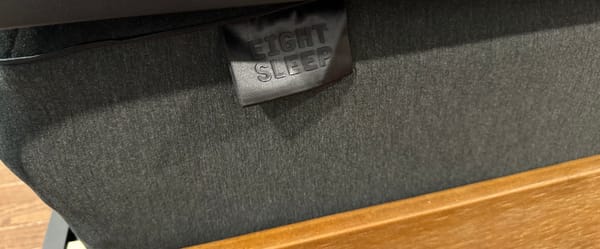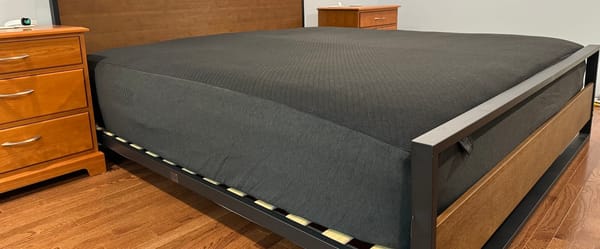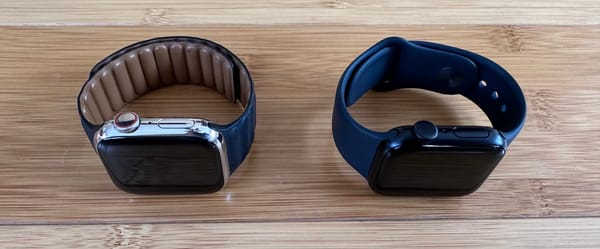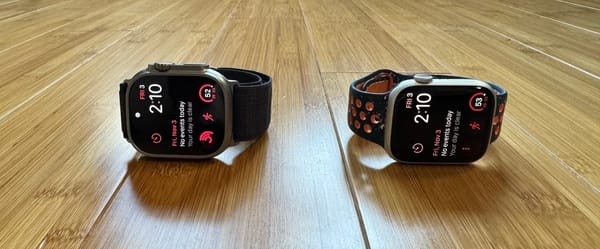Apple Watch Series 8 vs. SE 2: Thoughts From an 8-Year Wearer
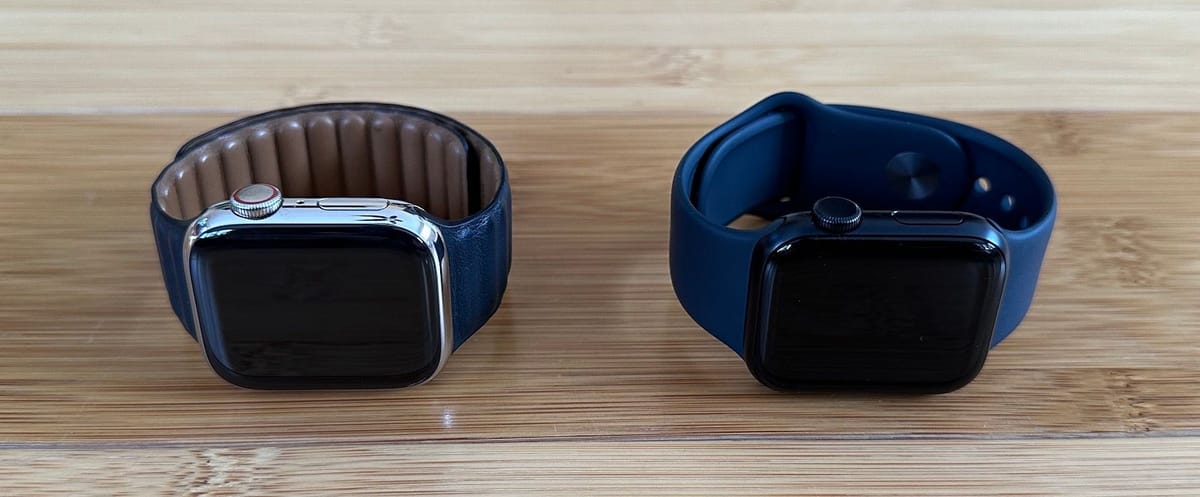
After two months of double-wristing Apple Watches (Series 8 and SE 2), and eight years of wearing Apple Watch daily, I determined that the SE 2 is the best bet for most people because it's more affordable and comes with every important feature with only minor sacrifices.
The Series 8 has an enhanced screen and a few extra features, but none of them are a must-have.
Let’s go over the five main reasons why you should consider Series 8. And if a couple of these reasons resonate with you, as they do for me, it might be a smart move to go for the upgrade.
(I’ll compare the smaller 40mm and 41mm models, but the results won’t vary much compared to the larger 44mm and 45mm models. And if you've never owned an Apple Watch, I recommend my Apple Watch Basics post before reading this comparison to get you up to speed on their capabilities.)
1. Always-On Screen
Series 8’s biggest feature upgrade from the SE is the Always-On screen. To understand the importance of the Always-On screen, first, let’s go over how the screen on the SE works.
How SE's Display Works
- The SE’s screen turns black when it's not in use. Twist your wrist towards your eyes to wake the screen. It should happen naturally and not feel forced. The twist to wake worked 98% of the time, in my experience. But be aware that you’ll look goofy when you exaggerate your wrist twist on the second attempt after the first doesn’t wake the screen.
- Tap on the display to light it up.
- Twist the Digital Crown to light up the display slowly, then twist it back to make it go black.
How Series 8's Display Works
The Series 8 display never turns off completely. It dims and reduces the refresh rate from 60Hz to 1Hz when inactive, but it still maintains enough brightness to display the time and other complications. It can be brought back to full brightness and refresh rate by moving the wrist, tapping the display, or twisting the digital crown.
The Always-On screen is hugely popular among its owners and other reviewers because they appreciate that it makes the Apple Watch feel more like a traditional watch. Is a watch really a watch if it doesn’t always display the time? The Series 8’s display is most useful to me during workouts to check heart rate, duration, or running pace without manually activating or worrying about the screen.
But overall, I prefer to keep the Always-On display disabled. It’s a distraction for me and those around me. Most would disagree, and I’m definitely in the minority, but it’s not necessary to be locked into tech 24/7. The Apple Watch staying black when not in use is a feature, not a bug. When I want the screen to light up, it should be intentional. And in the process of disabling the Always-On screen, you’ll get an extra six hours of battery runtime in return.
The bottom line? The Always-On screen is amazing technologically speaking, but I find it to be unnecessary and extremely overhyped by others.
2. Screen Size
In 2018, the Series 4 got a screen upgrade, as it was 30% larger than the Series 3. It increased from 38mm to 40mm. The Series 4's metal case remained the same size as Series 3, but the pixels were pushed closer to the edge. In other words, the black border, also known as the bezel, was reduced significantly.
At the time, I was blown away at how much the experience improved all from just an extra 2mm. Everything was easier to use—especially when running or doing something where your full focus couldn’t be on the watch due to the larger fonts and better spacing.
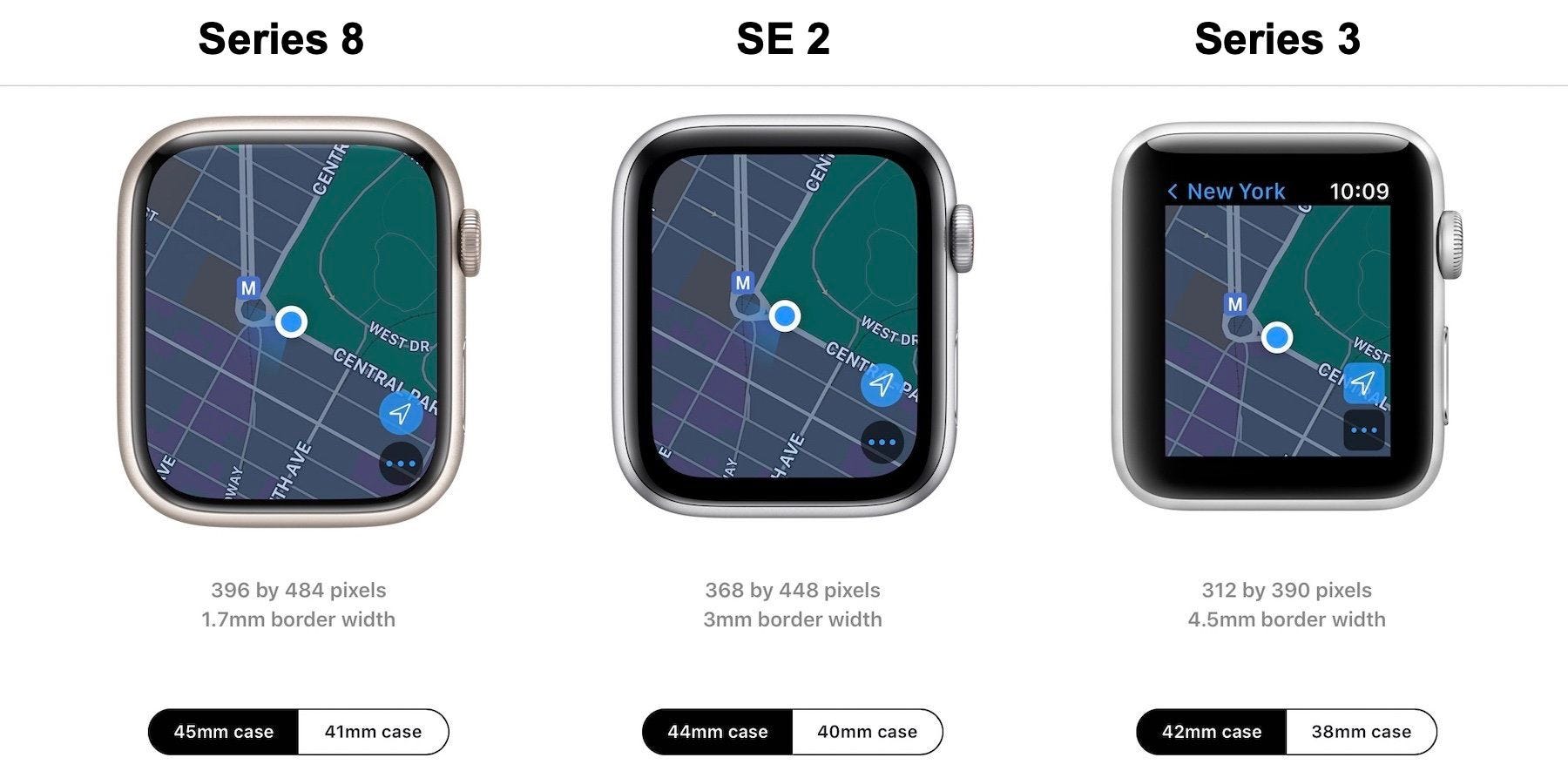
With Series 7 and Series 8, Apple pushed the pixels even closer to edge–so close that the pixels almost curve off. The display is just 1mm larger than the SE, which doesn't sound like a lot, but it's good for a 20% increase. Remember the size of the case stays the same, but you get more pixels.
The difference isn’t as drastic as it was when going from 38mm to 40mm. But when I went back to my SE (40mm), after a few weeks, the text was noticeably smaller.
The bottom line? Series 8’s added display real estate isn’t necessary or drastic, but it’s nice to have and one of the main reasons why I’m sticking with my Series 8 over the SE.
3. Internal Specs
The first generation of the SE had a slightly worse chip than the flagship Apple Watch models, but this year, the SE 2 and Series 8 each have identical dual-core S8 processors.
You won’t see any difference in performance, but there’s a slight difference in the battery runtime. If you’re using these watches as intended, with the Series 8 Always-On display enabled, each models gets around 34 hours of runtime according to my testing.
However, the 40mm Apple Watch SE has a 245 mAh battery, while the 41mm Series 8 has a 282 mAh battery, which is good for a 15% increase. With the Series 8's Always-On screen disabled, the battery capacity difference can be seen with an extra six hours of runtime.
Keep in mind, my testing included two hour-long workouts and eight hours of sleep tracking with my phone usually in close proximity to the watch. When the watch is connected to LTE or WiFi without a phone nearby, it’ll lose a few extra percentage points per hour.
Another benefit of the Series 8 battery is that it charges faster. It can go from 0% to 80% in about 45 minutes, while the SE 2 takes 1.5 hours to get to the same level. It's not a huge deal if you charge before bed each night. But if you plan to use your Apple Watch for sleep tracking, it’s a bigger deal– Apple advertises eight minutes of charging for eight hours of sleep tracking.
The Series 8 features three minor hardware enhancements: the U1 chip for spatial awareness, a 3rd gen optical heart sensor, and dual-band WiFi support (2.4GHz and 5GHz). However, I haven't seen a practical application of the U1 chip on the watch yet, and the heart rate readings may be slightly more responsive when your arms are moving, but the readings are identical when worn simultaneously.
The bottom line? These watches are nearly identical internal specs-wise, but if you plan to track sleep and keep the Always-On display disabled, the Series 8 will give you more versatility.
4. Three Extra Health Features
The SE has a compass, always-on altimeter, fall detection, an option to add a cellular plan, and Family Setup just like the Series 8, but the Series 8 offers three additional features compared to the SE:
- An ECG reader is accessible by holding a finger on the Digital Crown for 30 seconds.
- A blood oxygen reader that uses green, red, and infrared LED lights to measure the blood vessels in your wrist. To take a reading, keep your wrist still for 15 seconds with the watch facing upwards. If accurate readings are important to you, a $20 pulse oximeter will likely make more sense, but it's a nice bonus feature for the watch.
- A temperature sensor, primarily used for more accurate ovulation tracking.
The bottom line? Some of these extra health features are potentially life-altering, especially for those with specific conditions or those climbing high altitudes, but as a healthy individual without any preexisting conditions, it’s unlikely that they’d be helpful. The only time I use these features is when I’m testing for review purposes.
5. Premium Materials
The SE comes in three aluminum case colors (midnight, starlight, and silver) and has an Ion-X glass display. The Series 8 comes in the same three aluminum case colors as the SE (midnight, starlight, and silver) and has a slightly upgraded Ion-X glass display that's more crack resistant.
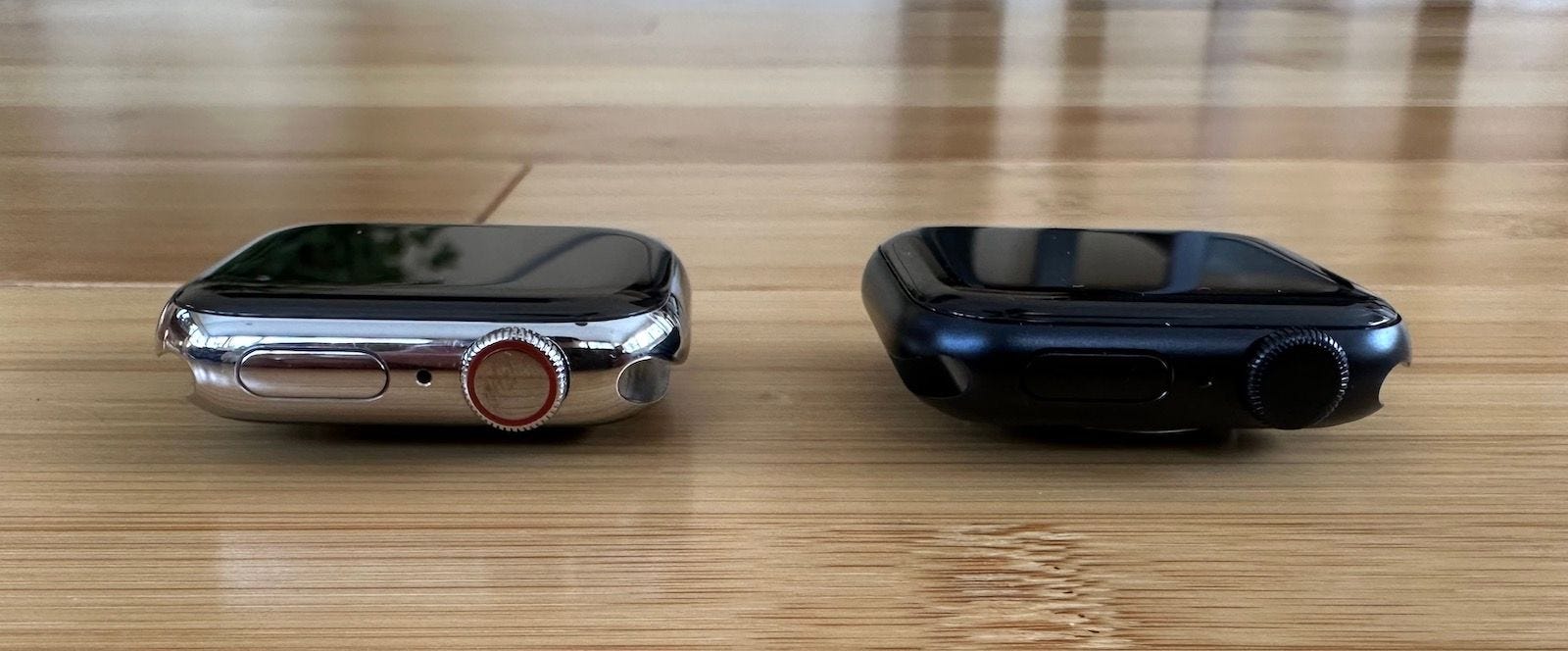
If you’re planning to buy either the entry-level SE for $249 or the Series 8 for $399, you can stop reading this section because there’s hardly any difference in the materials between these two.
However, if you're willing to spend $699 ($450 more compared to the SE), the Series 8 offers a noticeable upgrade in materials. The stainless steel casing and sapphire crystal glass screen make it look and feel premium. The Ion-x glass used in the aluminum models is known for lots of surface scratches and aluminum can be scratched, but the sapphire glass is much more scratch-resistant and durable.
The aluminum models feel fine until you switch to the stainless steel with sapphire glass. When going back to the aluminum models for reviews, the screen feels hollow and squishy in comparison. The stainless steel is heavier at 39g compared to the aluminum at 32g, but the weight difference is not noticeable when wearing the watch.
The bottom line? There's nothing wrong with the aluminum watch models. I happily used them for four years before trying the premium materials. But if you're not on a tight budget, the look of the stainless steel and the premium feel of the sapphire glass are amazing upgrades. The premium materials are the primary reason why I'll stick with my Series 8 over the SE.
Which is best for you?
Apple Watch Series 8
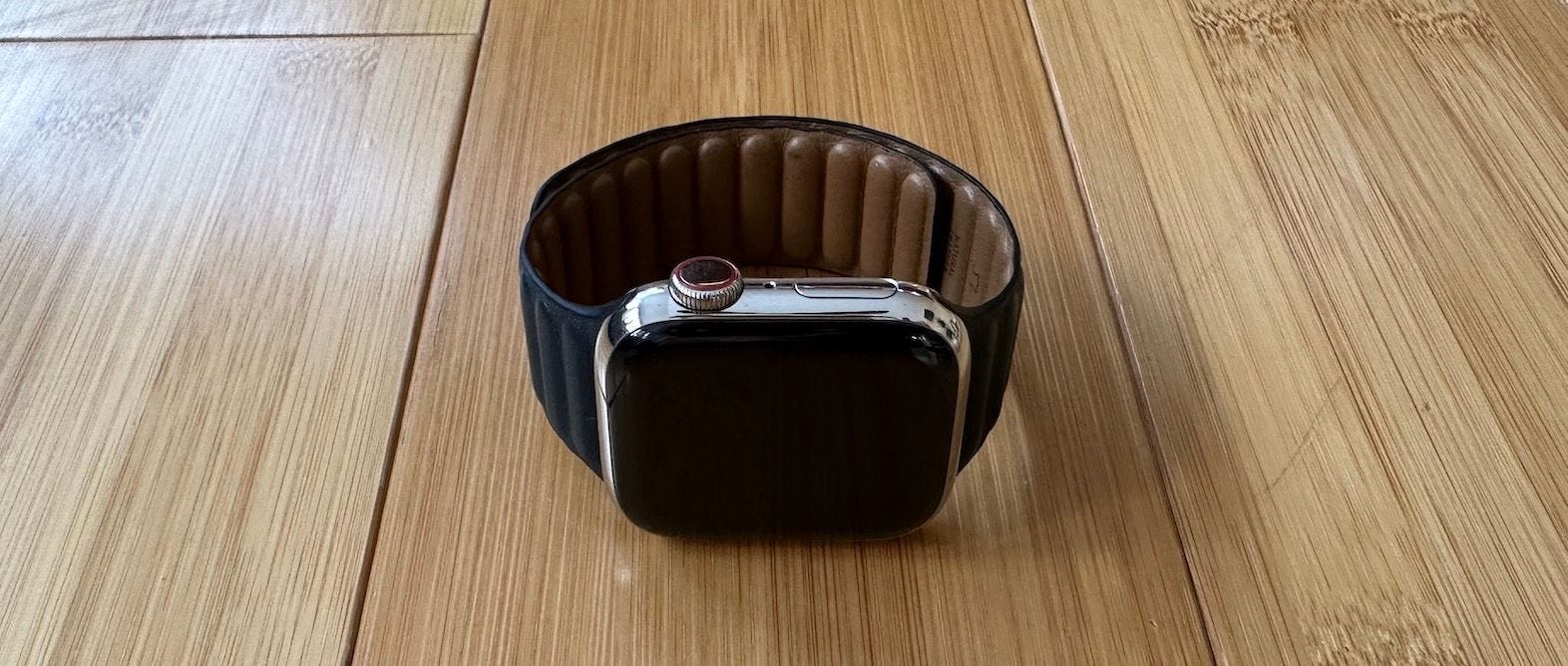
- Hardware (A+)
- Features (A+)
- Appearance w/ Stainless (A+)
- Appearance w/ Aluminum (C)
Get Apple Watch Series 8 if you want an Always-On display that's slightly larger than the SE. Or, get the Series 8 if you want a premium stainless steel finish with a sapphire glass display. The blood oxygen, ECG, and temperature sensor features are helpful, but if you need them, you're probably already on your way to buying Series 8.
Apple Watch SE 2
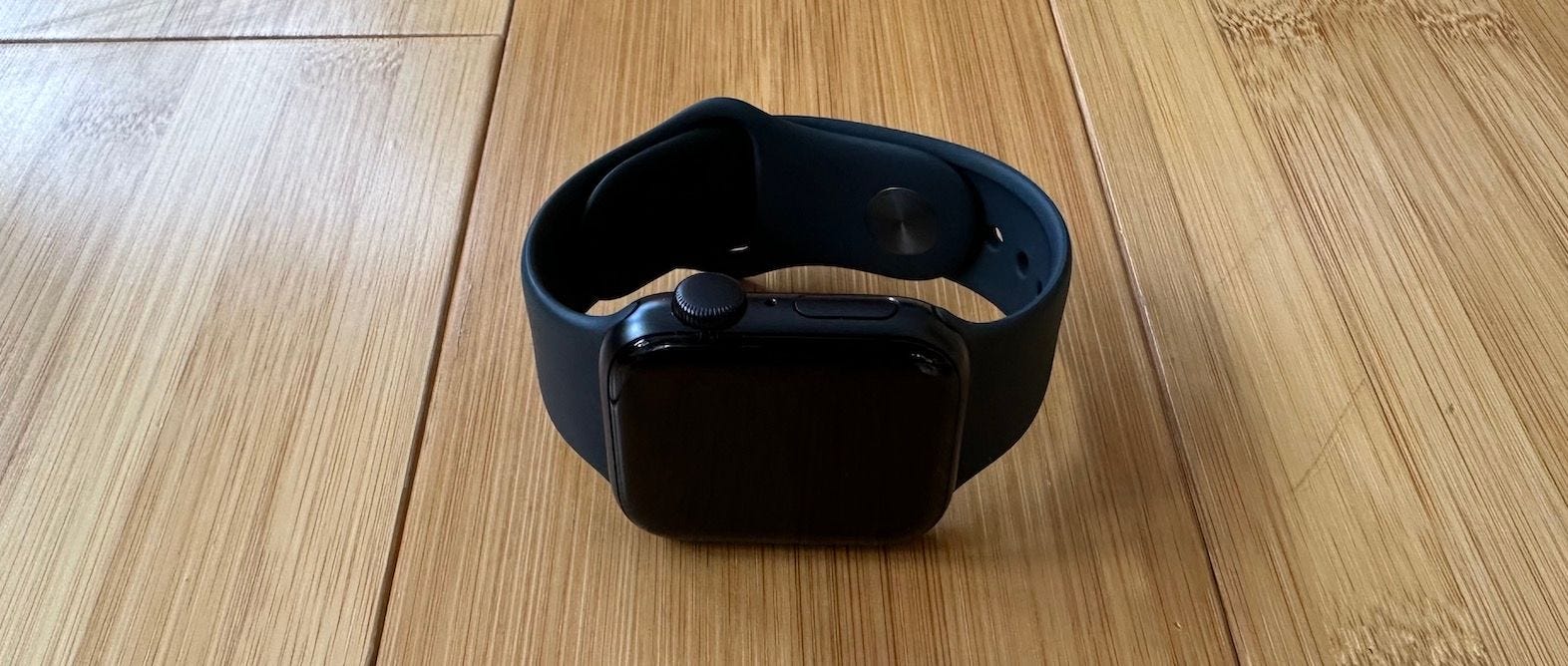
- Hardware (A)
- Features (B)
- Appearance (C)
Get Apple Watch SE 2 if you want the standard aluminum finish and don’t mind the screen turning off when it’s not in use. The SE is a fantastic value because it has identical speed and essential features compared to Series 8. The substantial sacrifice is the lack of an Always-On display, which I’ve found to be overrated after four years of using it.
Want to support this blog? (affiliate disclosure)
I'm not affiliated with any of the products that I review on this blog. I always purchase them out of my own pocket to ensure that my reviews are unbiased. However, as an Amazon Affiliate, I earn a small commission (usually between 1-4%) on some purchases made through the links in my posts. These commissions help support my blog by allowing me to buy new products and produce reviews independently.

